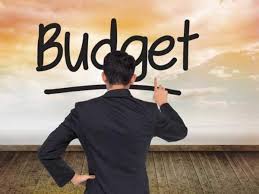Key Terms of Union Budget
1. DISINVESTMENT:
It refers to the act of marketing assets of a subsidiary or a procurement by the government of a government-owned enterprise. This is often in dire straits raising resources to satisfy the conventional expenditure of running the government or for special comes like giving further capital to banks. Divestment is therefore refers to a form of non-tax revenue. The government minister announces the expected quantity to be raised throughout the year.
2. SUBSIDIES:
This refers to the number spent by the govt. so as to scale back the worth of some merchandise but the value. Subsidies are sometimes given on food products, fertilizers, etc. Last year the whole quantity spent on subsidies was Rs. 3600 billion.
3. TAX REVENUE:
This is the number that the government raises by levying taxes. Various taxes imposed under Key Terms of Union Budget are capital tax, Service tax, excise duty, customs, and corporation tax.
4. PLAN EXPENDITURE:
This expenditure is incurred by the central government in consultations with the design Commission for comes and in areas associated with the accomplishment of the goals started within the 5-year plans. The expenditure under Key Terms of Union Budget here is predicted to lead to the creation of higher infrastructure and facilities across the country.
5. NON PLAN EXPENDITURE:
Non-plan revenue expenditure is that the quantity spent by the central government for the day to day running of the country for interest payments, subsidies wage and earnings payments to government staff, pension, body prices, defense expenses policy, economic services in numerous sectors, different general services like collection, social services, and grants to foreign governments.
6. DEBT SERVICING:
It is the whole of the capital repaid throughout the year together with the interest payments created on loans. This shows the number that’s spent on managing the debt of the country.
7. REVENUE DEFICIT:
There is a distinction within the revenue and also the expenditure of the govt.. Revenue deficit is calculated by the distinction between the revenue expenditure of the govt. and also the revenue receipts that are attained throughout the year.
8. FISCAL DEFICIT:
This is the distinction between the whole expenditure of the govt. in a very year and also the revenue receipts and also the recoveries of loans. it’s totally different from revenue deficit because it represents the number that the govt. can need to borrow to fund its deficiency. Lower the business deficit, the higher economy is.
9. PRIMARY DEFICIT:
This is the number that’s omitted when deducting the interest payments of the country. it’s called the first deficit because it provides the distinction between the whole expenditure and revenue. The smaller the interest payments, the higher it’s for the economy.
10. DEDUCTIONS:
This refers to the number that may be allowed as a deduction from the whole rateable financial gain of the payer. the ultimate tax is calculated on the rateable financial gain when considering the deductions therefore this helps to scale back the rateable financial gain and consequently the tax to be paid and therefore deductions are expected by all taxpayers in order that they will build the foremost out of it.
Read More Articles at Dialabank




